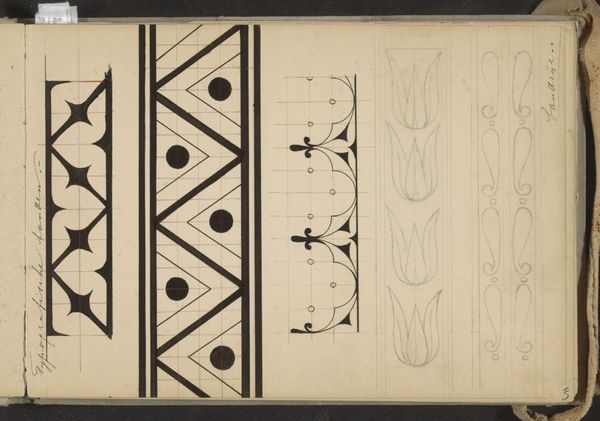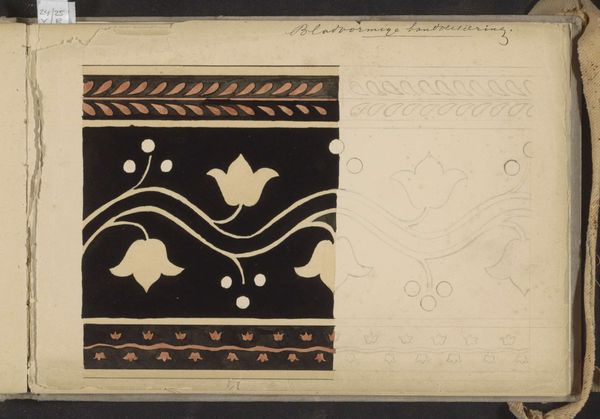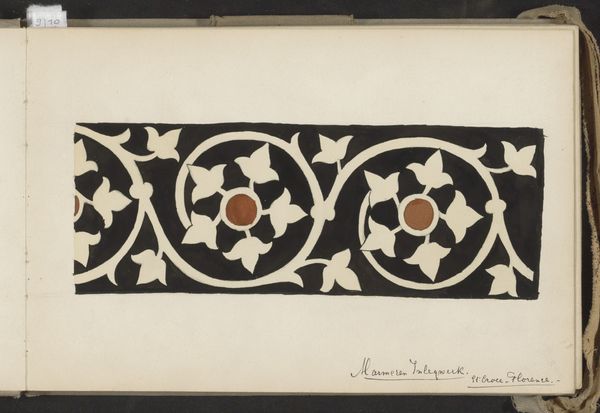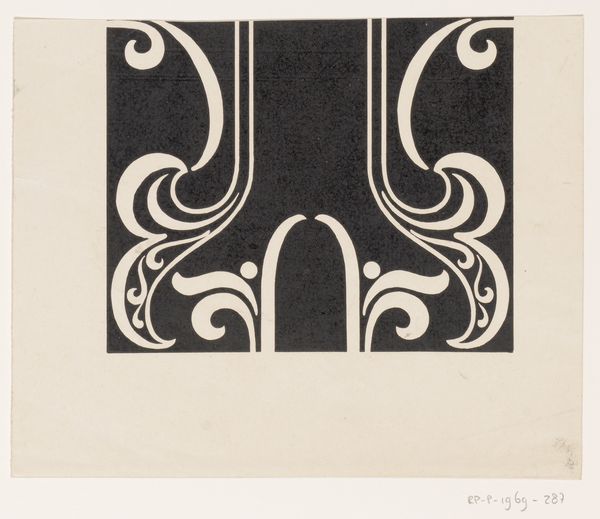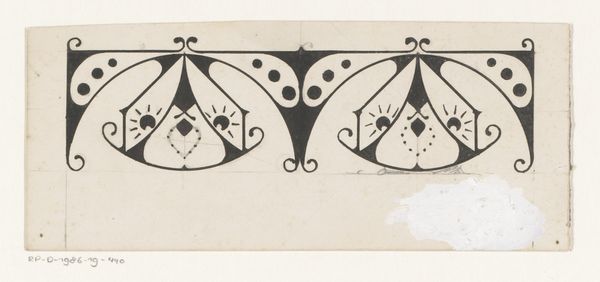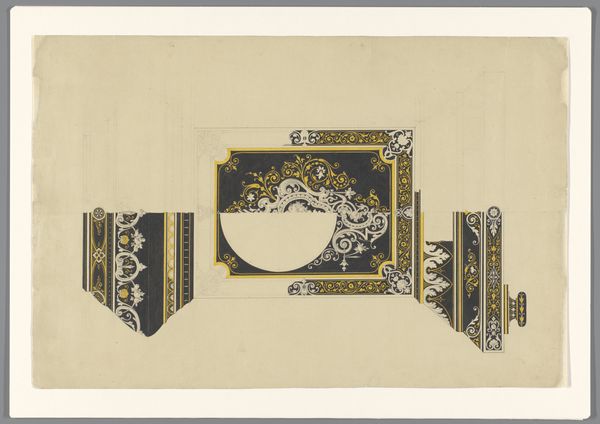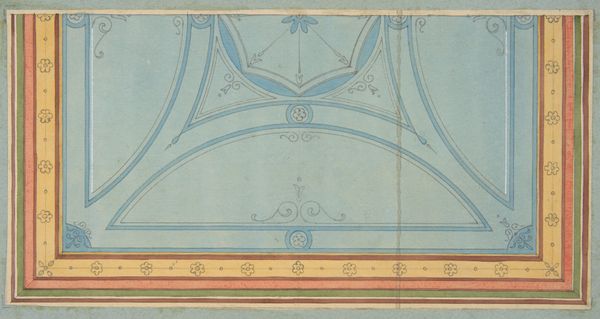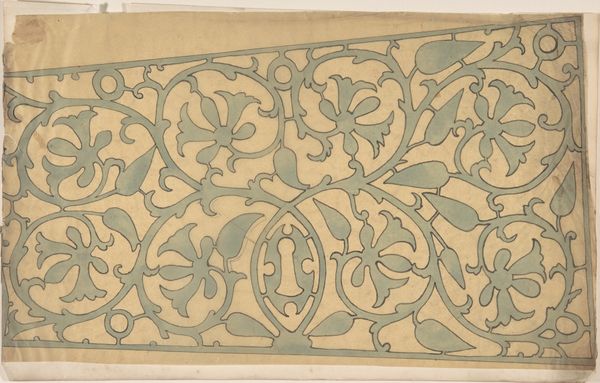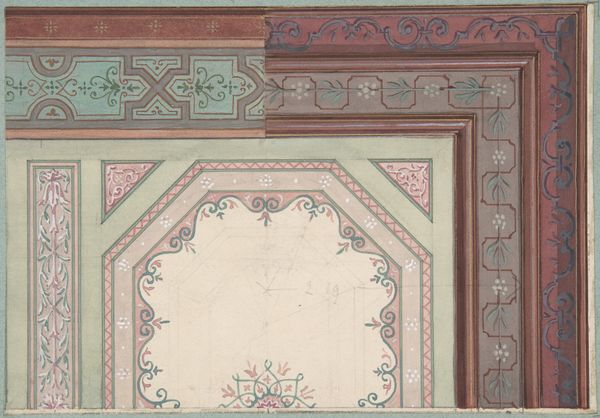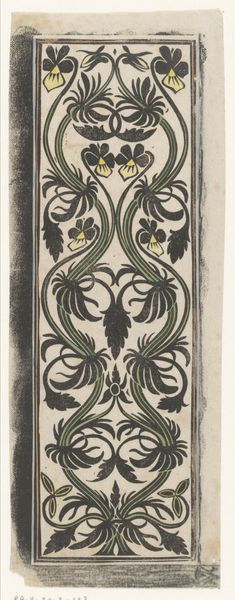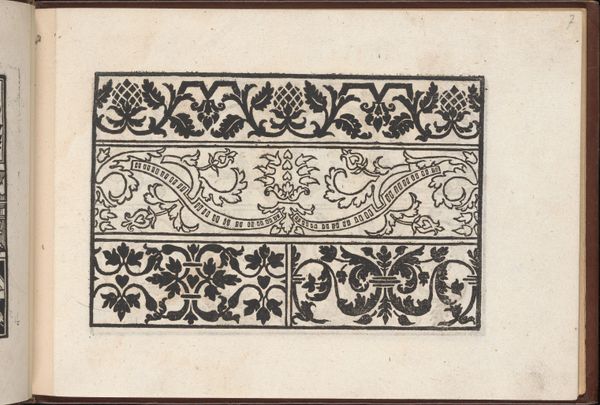
drawing, paper, watercolor
#
drawing
#
greek-and-roman-art
#
paper
#
watercolor
#
geometric
#
watercolor
Copyright: Rijks Museum: Open Domain
Curator: What a captivating page of designs! This watercolor and ink drawing on paper is called "Greek Motifs, Including Waves" by Johanna van de Kamer. It's believed to have been created sometime between 1890 and 1922. I'm immediately struck by the almost soothing rhythm of it, like waves lapping at the shore. Editor: It does evoke a sense of calm. The linear nature, however, contrasts that calmness, especially given that repeated motifs like this one often featured prominently in architectural borders, or as decorative elements to denote class and solidify social narratives. Curator: I see what you mean. Though presented as almost gentle studies now, they held quite a bit of structural power back then. What resonates with me is van de Kamer's artistic eye distilling what’s essential about the motifs, almost in their purest, most archetypal forms. Do you think she's deliberately softening them, perhaps as a conscious rejection of their former uses? Editor: It’s possible. By this period, we saw increased anxiety related to industrialization and technology. Redefining cultural forms was key for many female artists as the public and political spheres continued to be dominated by men. Curator: Fascinating. Even the color palette contributes, I think. The limited range keeps the repetition interesting rather than monotonous. You've got blacks, whites, yellows, blues, even a little beige that almost creates a sense of time gone by. Editor: Indeed, that restrained palette definitely hints at an evolving cultural mood. A visual distillation where the form’s simplicity contrasts starkly with the design's initial social functions, even calling to mind the complexities of womanhood that marked the dawn of modernity. Curator: I am beginning to wonder if we could read it, ultimately, as both a continuation of and a reflection on an artistic style. Perhaps it’s an attempt to negotiate her role within it, as a female designer. Editor: Precisely! It highlights the intricate balance of art, power, and social identity, offering much more than a quaint page of Greek-inspired ornamentation.
Comments
No comments
Be the first to comment and join the conversation on the ultimate creative platform.
